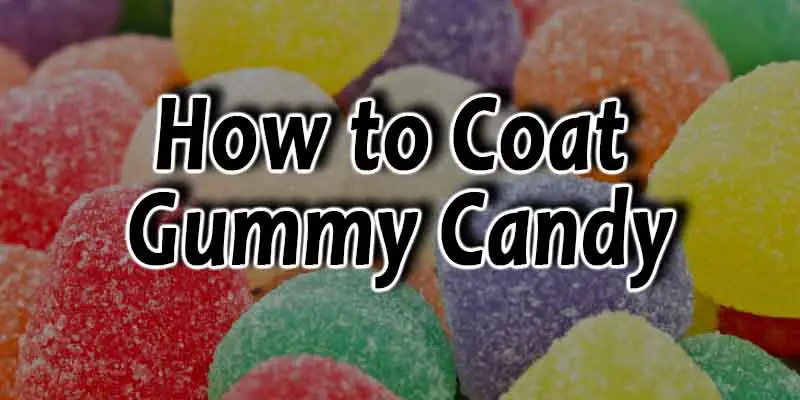Sour candies are addicting! Something about that hit of citric acid as the candy touches your tongue, making you pucker up, is delightful.
If you have ever tried to coat your gummy candies in sugar and/or citric acid, you may have ended up with sticky or “wet” appearance.
This is undesirable as sticky gummies are not fun to eat or chew.
Why do gummies become sticky (even after coating)?
Too much water in recipe.
This is most common in gummy recipes that use fruit juices as their base for flavor. Even fruit purees can have too much moisture to boil off when cooking to the softball stage.
Stickiness can be fixed by reducing the amount of water used or increasing the amount of gelatin.
Citric acid is hygroscopic.
Responsible for the sour taste. It is also found in citrus fruits like lime, oranges, and lemon.
Hygroscopic means it will attract water and moisture. It can pull moisture both from the gummy and environment.
Environment is humid.
Even after the gummies have set and dried, they can become gooey on the outside if stored or coated improperly.
How to coat gummies with citric acid?
If you have ever tried to coat gummy candy in sugar or citric acid, there’s a high likelihood that the gummies became sticky and wet afterward. It is important to not introduce too much moisture onto the gummies as any additional coatings can clump.
After setting in the fridge/freezer, coat in corn starch.
The idea is to pull out as much moisture as possible. Corn starch also helps in preventing the gummies from sticking together.
Make sure to brush off excess cornstarch afterward. Do this before attempting to coat with sugar and/or acid.
Allow gummies to dry or cure in open air for at least 24 hours.
Depending on the humidity, you might have to dry the gummies even longer before being able to coat them without gooeyness. Remember to flip the gummies every 12-24 hours.
Use anhydrous citric acid.
Citric acid will pull moisture from the gummy candy. Using anhydrous citric acid such as this is important in reducing the amount of water pulled to the gummy’s surface.
Mix sugar and citric acid in a 3:1 ratio.
If needed, adding a coating layer of cornstarch before adding the sugar/citric acid combo can help stop the gummies from sticking together.
Another trick is to mix citric acid and water in a spray bottle. After coating your gummies in sugar and allowing them to dry, spray the candy with the citric acid and water combo.
For a more sour taste, just make the spray more concentrated. Spraying more liquid onto the gummies will just result in a wet appearance.
Why coat with citric acid instead of infusing?
You may notice that most candies are coated rather than infused with citric acid. After all, the candy could be sour for a lot longer! However, getting candies to stay sour is difficult and inefficient.
When infusing citric acid into gummy candies, it is hard to achieve the same level of sourness as coating. Not only that, you have to use even more citric acid than usual, which can result in heartburn or a painful tongue.
Coating candy in citric acid allows you to get that sour hit of flavor on the tongue right away. But eat too much sour candy and it will corrode away the inside of your soft fleshy mouth and damage your teeth.


